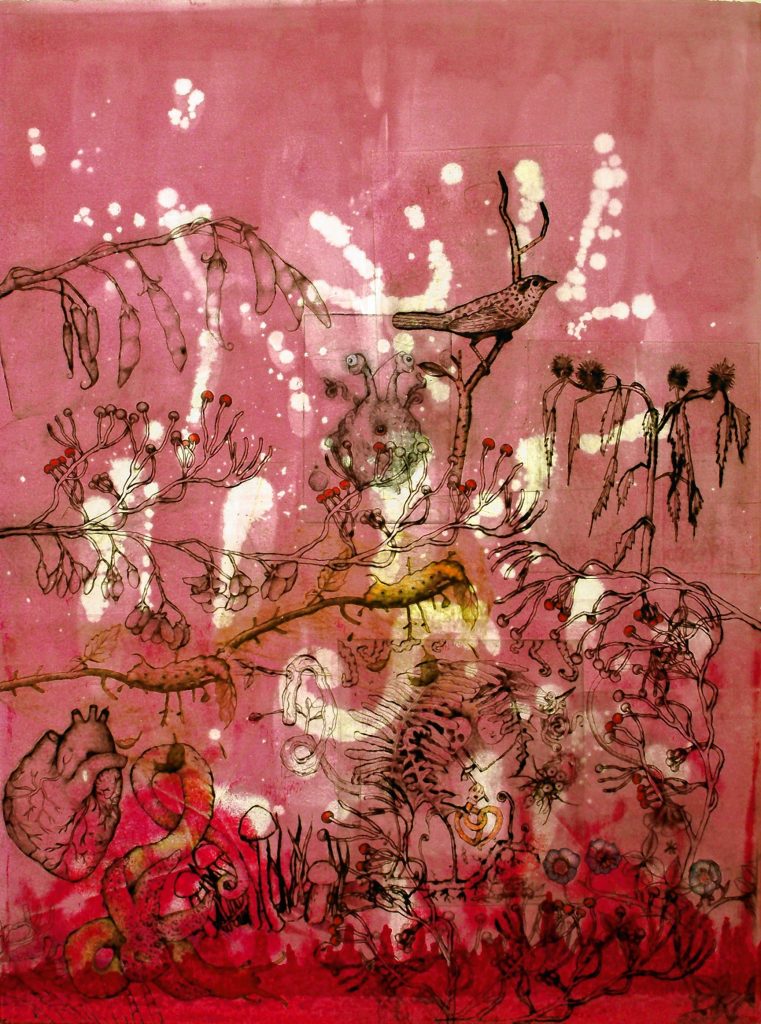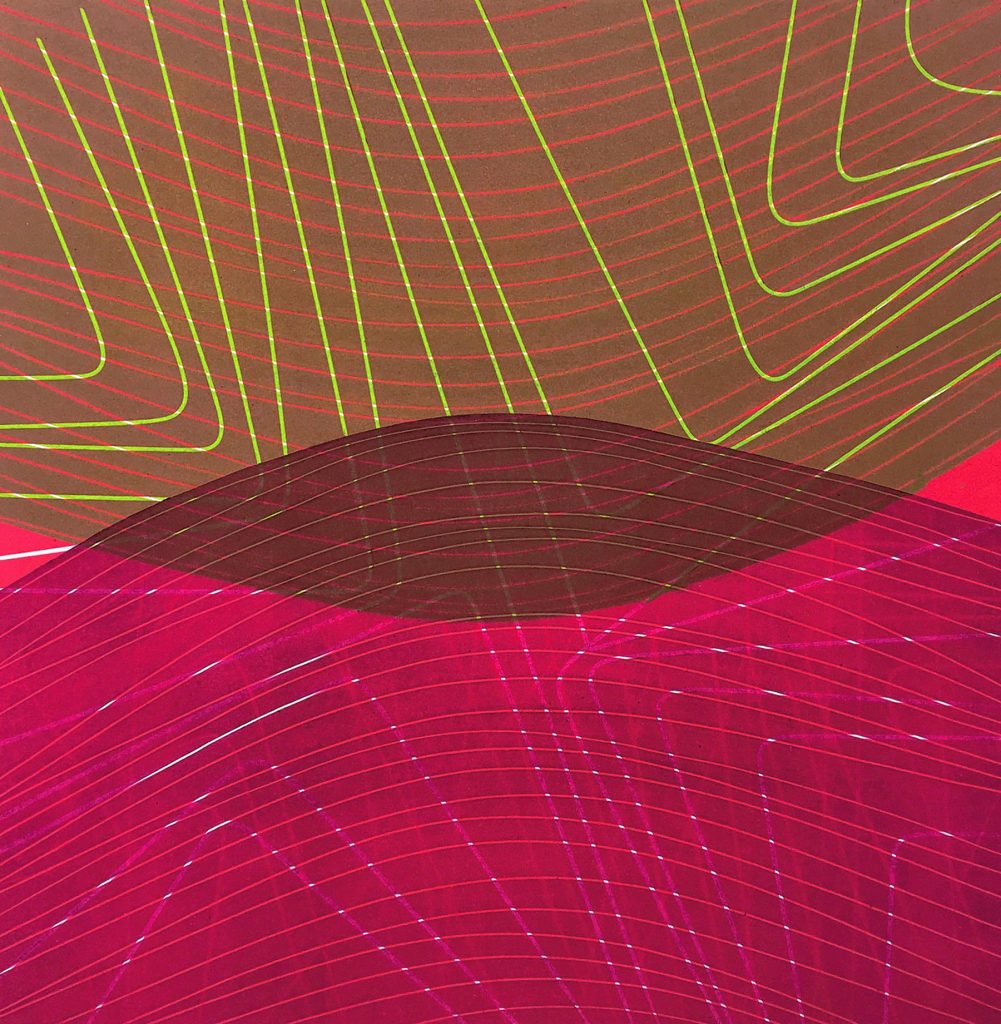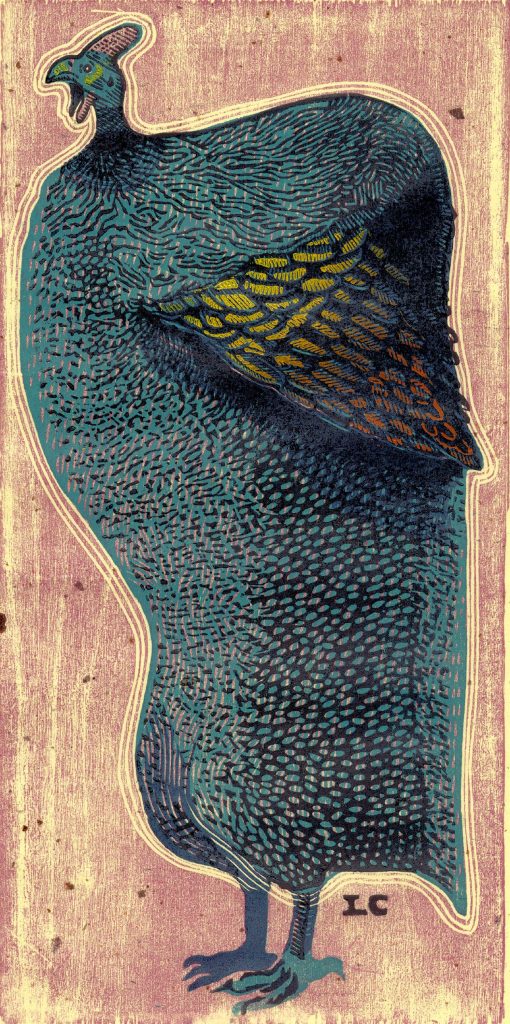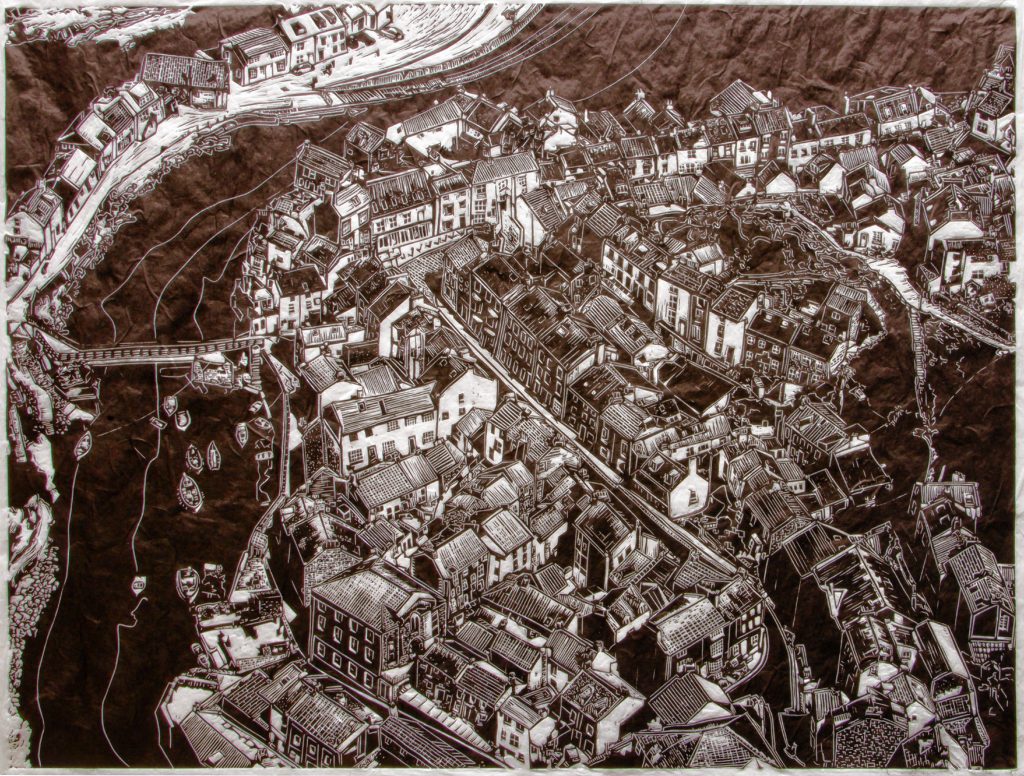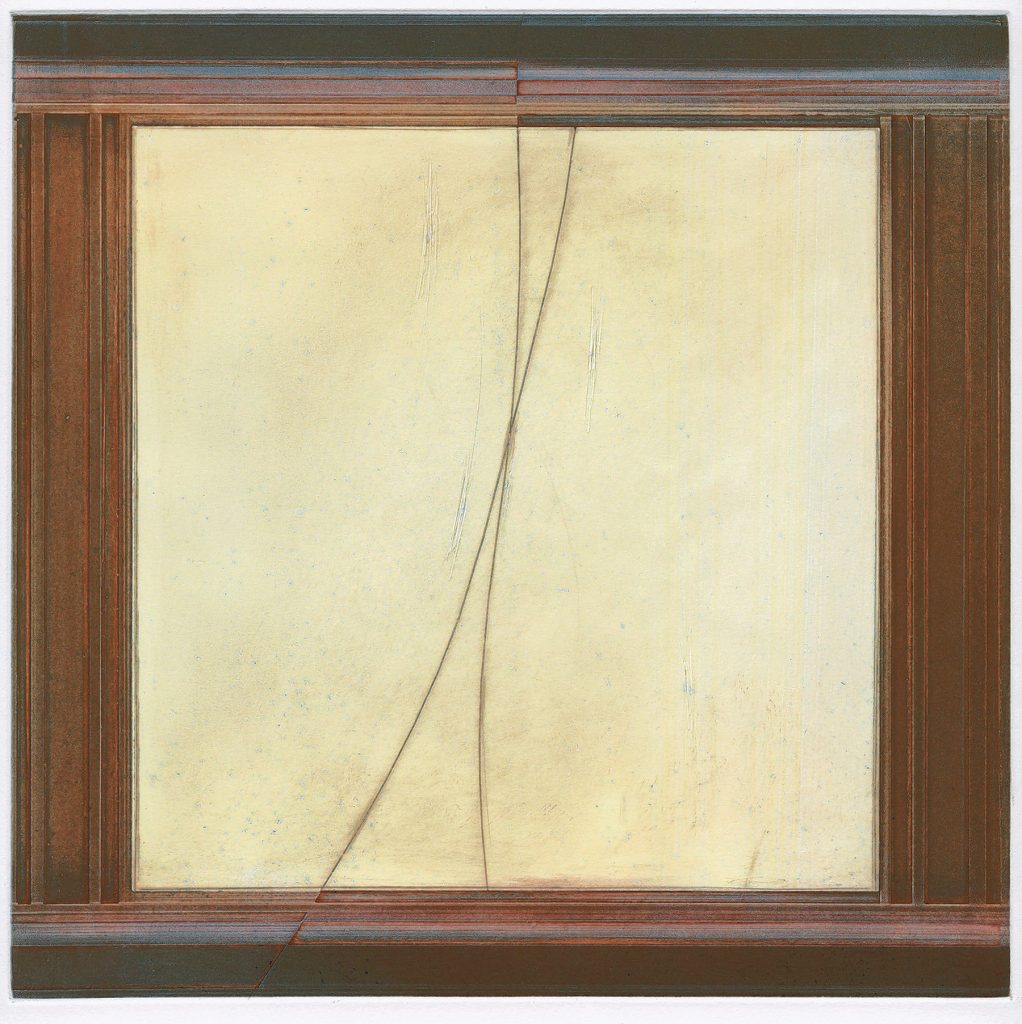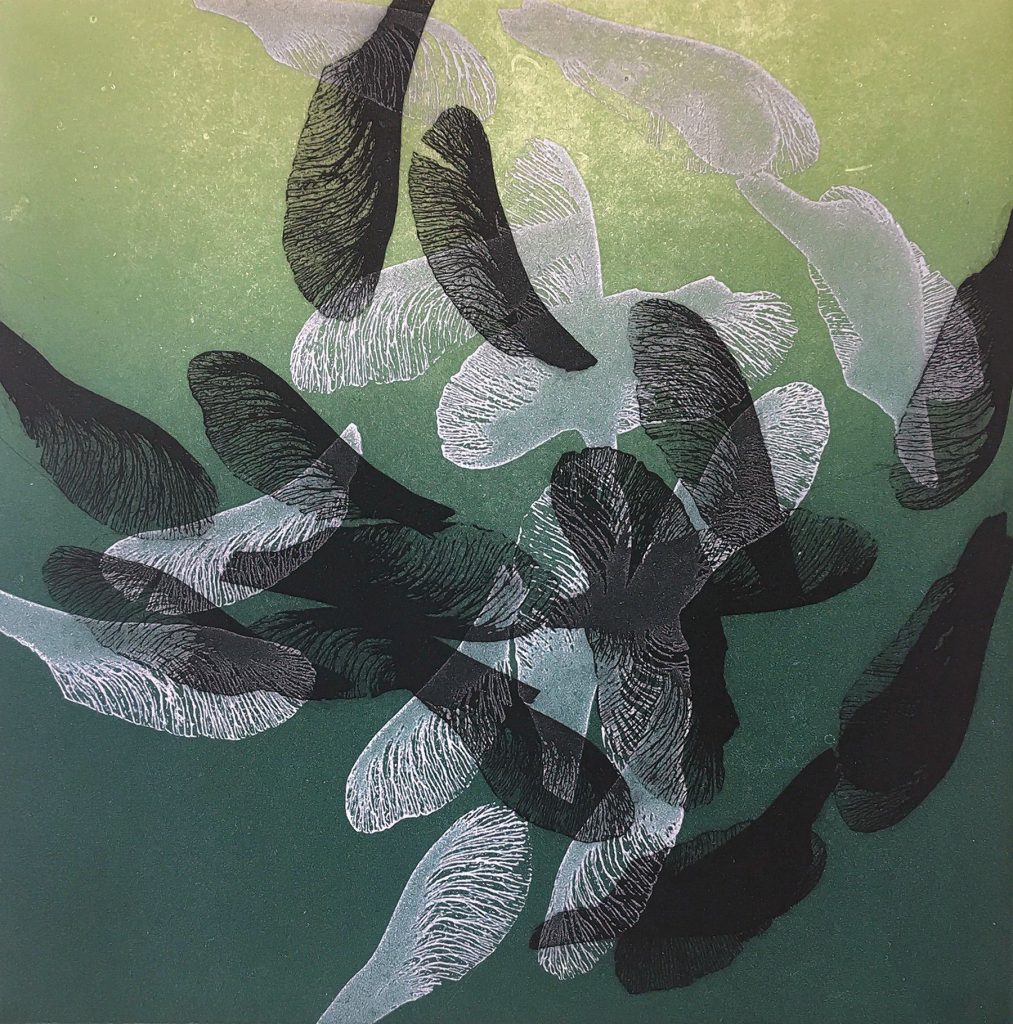Monitor staff
If you head over to McGowan Fine Art’s newest exhibit, you just might learn something new.
“Impressed” is a display of 28 pieces of contemporary printmaking in a variety of styles. An opening reception will be held Friday from 5 to 7 p.m.
“We just thought it would be fun to feature prints,” said McGowan owner Sarah Chaffee. “We haven’t done a print show in a while. People frequently have questions about how they are made, which piques their interest.”
Lyell Castonguay, Karen Dow, Sara Emerson, Mark Johnson, Judy Lampe, Nori Pepe, Vicky Tomayko, Sheri Tomek and Bert Yarborough are the artists featured in the show.
“We have asked that each artist write about their technique, so this will be a great opportunity to learn how art prints are made,” Chaffee said. “Their descriptions will be hung on the wall next to their prints.”
Techniques for printing – transferring an image from a matrix to paper – can vary. They include etching, woodcut/linocut, lithography, screen printing and monotyping.
To show even more printmaking, McGowan will host a demonstration by Johnson on May 19 from 11 a.m. to 12:30 p.m.
He plans to focus on color in printing during the demonstration. Color in printing is different than in painting or sculpture, Johnson explained.
Johnson teaches printing at New York University and lives in New York. His father’s family is from New Hampshire, though, and he’s spent a lot of time here. He has also participated in several McGowan group shows before.
While attending college, he was considering going into architecture. Then he spent some time in the graphic arts fields and thought more about becoming an artist.
“It’s an interesting field because I don’t think it’s well understood,” Johnson said.
First, the artist must make a matrix out of a plate of metal or wood or something else, which they spend a lot of time on. Then, they put ink on it and transfer it to paper.
People see the final product, Johnson said, but not all the steps in between.
Today, his primary medium is etching. He does color etching which requires a matrix, or plate, for each color.
“It can get pretty complicated,” he said.
However, since the image is on the plate, you can make more than one copy or you can experiment with it in a different color.
“One thing I love about prints, I feel in one sense they are more democratic,” Johnson said. “The first time people could have art in their homes was because of reproducing. … It’s affordable.”
On display at McGowan will be three pieces from a series he’s been working on for 10 years on dark matter.
Dark matter is a concept that scientists theorize might account for 80 percent of the observable universe. It doesn’t emit light or energy but it influences the motion of stars.
Johnson imagined what dark matter might look like.
“I like the idea for most of the history of art, artists have given a visual manifestation of ideas,” he said, giving the example that Picasso tried to portray Einstein’s theory of relativity.
He was 5 years old when the “moonshot” was happening, and he’s inspired by the whole idea of the night sky and moon phases, he said.
“When the dark matter came up, I was just fascinated by it,” he said.
Artist Karen Dow of Hamden, Conn., is another printmaking teacher who will have work in the exhibit. She works at the Educational Center for the Arts in New Haven.
“I get really inspired by the work that I do as a teacher,” Dow said. “The process of teaching my students comes back to my studio … and vice versa as well.”
Dow began printmaking as a graduate student in a Yale MFA program. It was for painting and printmaking, so she started taking those classes. She said it was almost an immediate obsession.
Her primary style of printing is monotype, where she uses a plexiglass matrix, creates a design with paper stencils, then presses the plate to paper for each color. She saves the inky stencils, often used several times on both sides, which may later be used as collage elements on her works in addition to gouache, a painting technique. The inked stencils get a patina to them after several runs of ink.
The pieces of art on display for “Impressions” are part of series, ranging from 2013 to 2016. She said she was able to develop her technique over time, with the newer ones featuring elements of paint and collage. She said she started more intuitive and is now more deliberate as she honed the technique.
Dow said she draws inspiration from crazy quilts and especially the Gee’s Bend quilts. Her art pieces feature layered blocky shapes in multiple colors.
This will be Dow’s first time showing work in a McGowan exhibit.
“Impressed” will be on display through May 25.

